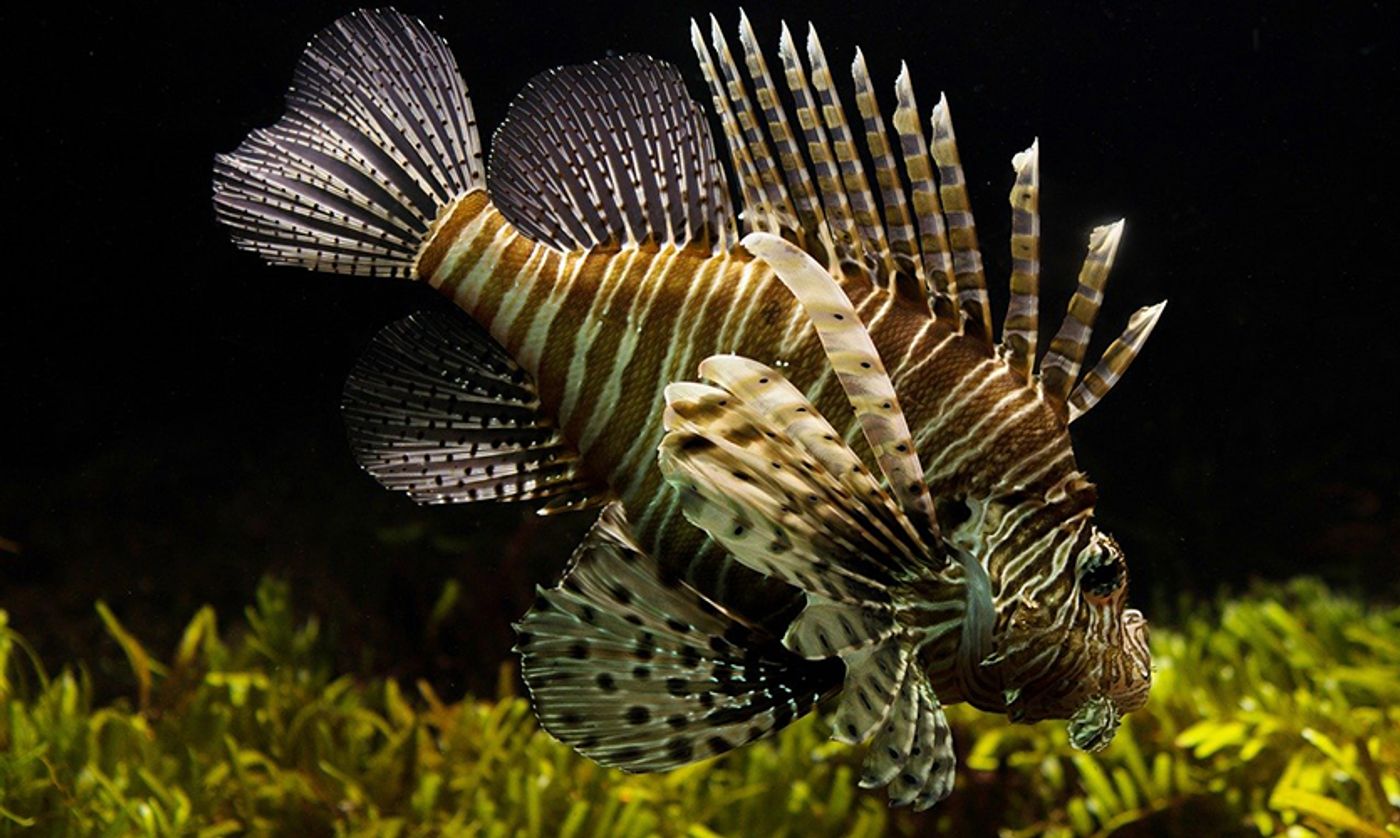Will Traps Solve the Invasive Lionfish Problem?
Extravagant and spiny lionfish were once highly sought after by home aquarium hobbyists. These venomous fish are native to the Indo-Pacific region, but according to the National Oceanic and Atmospheric Administration (NOAA), in 1985, they were detected along the coast of Florida. NOAA and other organizations believe that lionfish were released into nonnative areas by the same hobbyists that once cherished them.
Since the 1980s, lionfish populations have exploded in nonnative regions, officially making them an invasive species in the Atlantic, Gulf of Mexico, and the Caribbean. Due to rapid population growth, hearty appetites, and few predators, lionfish decimate the native habitats in which they’ve invaded. The Invasive Lionfish Web Portal states, “the invasion of lionfish may prove to be one of the greatest threats of this century to warm temperate and tropical Atlantic reefs.”
Several organizations are working to control lionfish populations and find alternative uses beyond aquarium display. NOAA suggests that lionfish should be harvested as food, an industry that makes live trapping, rather than poisoning or spearing, a necessity. The AP reports that Whole Foods sells whole lionfish at $10.99 per pound, but the supply is unreliable. In addition to providing a reliable harvest, the AP reports that live traps could also reach depths not currently accessible by spearfishing divers.
According to the AP, a recent study evaluated the effectiveness of one such live trap. The study, published this week in PLOS ONE, cites spearfishing as the primary mitigation method for this invasive species. However, a nonlethal trap would aid in expanding a commercial lionfish fishery. The trap would need to be “lionfish specific” to prevent unwanted bycatch and minimize damage to the surrounding habitat.
Steven Gittings, the science director from NOAA’s Office of Marine Sanctuaries, invented a modified lobster trap that has shown positive results. As seen in the video, when correctly deployed, this type of trap is successful in attracting and trapping lionfish with low bycatch. According to the study, for every ten lionfish, only one non-targeted fish was caught.
More work is needed to perfect these traps, but they are a step in the right direction to eradicate invasive lionfish and add a unique seafood option to menus.
Sources: AP News, PLOS One, NOAA, Invasive Lionfish Web Portal










